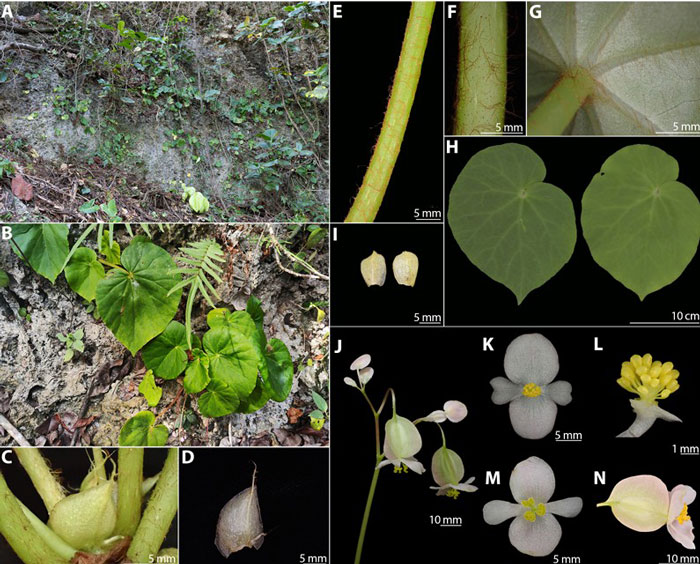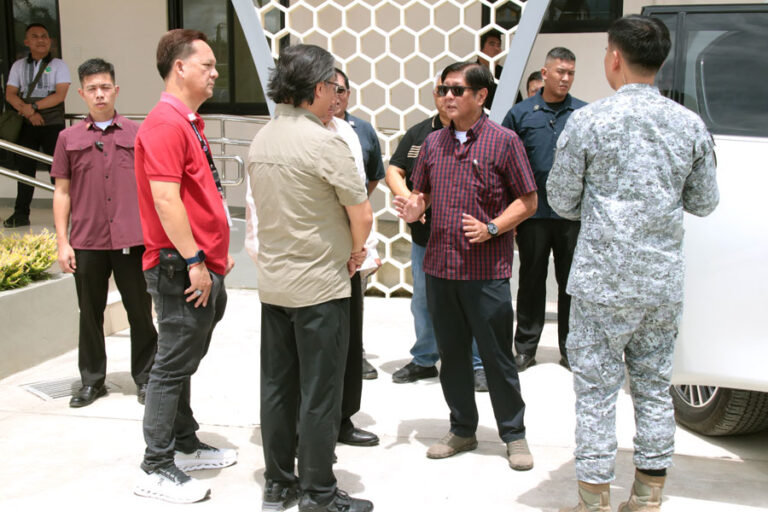THE WONDERS of the Philippines’ rich biodiversity never cease to amaze, as demonstrated by the recent discovery of two new Begonia species nestled in the lush forests of Davao Oriental, particularly within the Eastern Mindanao Biodiversity Corridor (EMBC), a renowned hotspot for endemic and threatened wildlife in the country.

The discovery resulted from a research expedition in Caraga, Davao Oriental, involving scientists and researchers from the Taiwan International Graduate Program, Academia Sinica, and the National Museum of the Philippines.
Following detailed morphological and molecular analyses, both species from section Baryanda were officially named B. medinae and B. dorisiae, honoring notable figures linked to Philippine biodiversity and culture.
medinae is named after Filipino entomologist Milton Norman Medina, who first observed the plant during biodiversity studies and whose contributions have significantly advanced understanding of Mindanao’s ecosystems.
dorisiae, on the other hand, pays tribute to broadcast journalist Doris Bigornia, whose name has become an informal yet effective moniker for the genus Begonia among local communities. The researchers noted, “Many Filipino botanists, particularly in this series of expeditions, find that the easiest way to make citizens remember the genus Begonia is to associate it with ‘Bigornia’. Across different islands and demographics, the best way to capture citizens’ interest when communicating the biology of Philippine Begonia is, in fact, Doris Bigornia.”
These discoveries add to the growing list of newly described Begonia species found exclusively within the EMBC, including B. abhak and B. noraaunoriae, and play a pivotal role in the country’s hidden floral diversity.
According to the research article published in Phytotaxa, titled “Morphological and molecular analyses revealed two new species of Begonia sect. Baryandra in the Eastern Mindanao Biodiversity Corridor, Philippines” and authored by Mark Angelo Bucay and colleagues, B. medinae thrives inland on shaded rocky areas near cliffs by a river and is found only at its type locality in Caraga. In contrast, B. dorisiae grows on shaded rocky cliff sides near the shore and is similarly restricted to its type locality in Caraga.
Flowering periods differ slightly: B. medinae blooms from August to September, while B. dorisiae flowers from July to August.

Both species are recommended for inclusion on the threatened flora list: B. medinae as Critically Endangered due to its limited population and habitat threats, and B. dorisiae as Vulnerable because its coastal habitat is susceptible to wave and typhoon damage.
While these discoveries underscore the EMBC’s remarkable biodiversity, the authors emphasize the urgent need for protection and conservation of these unique species.
In response, the Department of Environment and Natural Resources (DENR) in Davao region acknowledged the discoveries and reaffirmed its commitment to safeguarding the region’s rich biodiversity.
“DENR Davao remains steadfast in ensuring that all biodiversity—both known and newly discovered species—are protected for present and future generations,” the agency stated in a press release. (Antonio Oblianda/Davao Oriental/DENR Davao/DOrSU)



